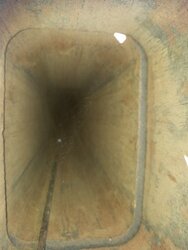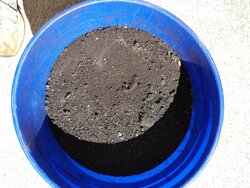


First year with my BK king. Think I got it quite clean. Burned around 4-4.5 cords last year, wood haf a little more MC than I would like. Wood will be better this year.
4.5-5 gallons creosote, shiny, some pieces about golf ball sized but a mixture as you can see.
Does this result constitute a mid-year sweep in your opinion? I did not do that last season. Thanks in advance...

